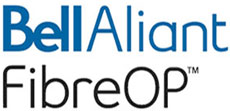
Bell Aliant’s FibreOp fiber to the home service may suffer as Bell/BCE redirects upgrade investments into shareholder dividend payouts.
Bell Aliant customers in Atlantic Canada won’t benefit from Bell Canada’s (BCE) efforts to take subsidiary Bell Aliant, Inc. private unless they happen to be shareholders.
In July, Bell Canada Enterprises announced its intention to privatize Bell Aliant, which serves customers in Nova Scotia, Prince Edward Island, New Brunswick, Newfoundland and Labrador, expecting at least $100 million a year in savings from reduced operating costs and capital investments.
Bell Aliant has operated largely independent of Bell Canada from its headquarters in Halifax, N.S. Bell Aliant customers have received FibreOp fiber to the home upgrades in several Atlantic provinces in recent years, providing more advanced services than Bell’s fiber to the neighborhood platform Fibe in Ontario and Quebec. Bell Aliant customers have also avoided usage caps and usage-based billing, getting access to unlimited use broadband at speeds up to 400/350Mbps.
Politicians in Nova Scotia immediately raised the alarm about the possibility of job cuts. Both Tory and NDP opposition leaders complain the Liberal premier has not done enough to protect jobs.

Bell Canada Enterprises
NDP MLA Dave Wilson said all three parties agreed to work on economic issues for the province. Wilson said he fears if the government isn’t vocal about its support for the jobs, Bell might look to move them elsewhere.
The news is better for those holding stock in the company. Existing public minority shareholders are being offered cash or shares of BCE stock (or a combination of both) in return for selling their Bell Aliant stock.
Bell wants to take Bell Aliant private to get access to its consistent $1 billion in cash revenue earned annually, mostly to satisfy BCE shareholders with a more reliable and consistent dividend payout.
Although Bell promises it will continue to invest in Atlantic Canada, its own financial disclosures show customers in the region will see spending on upgrades and other service improvements cut as a result of Bell’s actions.
Bell has committed to spending an average of $420 million a year across Atlantic Canada, but as an independent, Bell Aliant was investing $578 million annually, primarily on fiber upgrades. Over the next few years $160 million of the investment budget will be diverted to maintain a healthy divided payout for BCE stockholders. As of May 2014, BCE was paying a dividend of $0.6175 per quarter with common shares outstanding of 777.3 million, for a quarterly dividend payout of about $480 million per quarter, or $1.92 billion per year. As Bell Aliant shareholders cash out their holdings or convert them to BCE shares, the growing number of BCE shareholders will require Bell to spend more to satisfy dividend payouts. In fact, BCE may transfer enough money out of Bell Aliant’s operations to raise its dividend for all BCE shareholders to attract new investors.
Reduced spending will mean reduced upgrades for Bell Aliant customers. Bell is not promising significant cost savings from merger-related synergy, so capital spending will likely suffer the most as a result. So will customers.


 Subscribe
Subscribe Canadian investment analysts are recommending that Canada’s telecom giant Bell (BCE) should explore buying out Bell Aliant, Inc. the largest telephone company in the Maritimes, to further consolidate Canada’s telecommunications marketplace.
Canadian investment analysts are recommending that Canada’s telecom giant Bell (BCE) should explore buying out Bell Aliant, Inc. the largest telephone company in the Maritimes, to further consolidate Canada’s telecommunications marketplace.
 Atlantic Canada enjoys some of the fastest Internet service in the country, often without any usage caps. EastLink offers, in addition to its budget Internet tiers, service at 20, 40 and 80Mbps. Their primary competitor is Bell Aliant, which operates its FibreOp broadband at speeds of 50, 80, and 175Mbps.
Atlantic Canada enjoys some of the fastest Internet service in the country, often without any usage caps. EastLink offers, in addition to its budget Internet tiers, service at 20, 40 and 80Mbps. Their primary competitor is Bell Aliant, which operates its FibreOp broadband at speeds of 50, 80, and 175Mbps.


